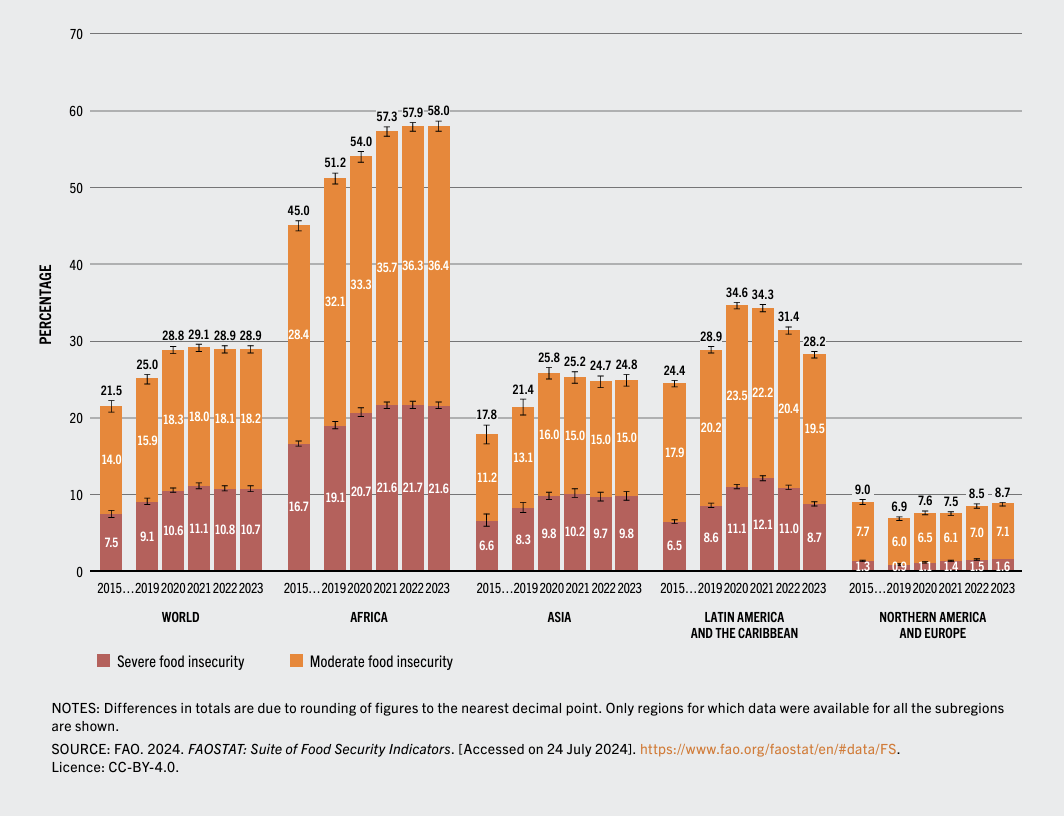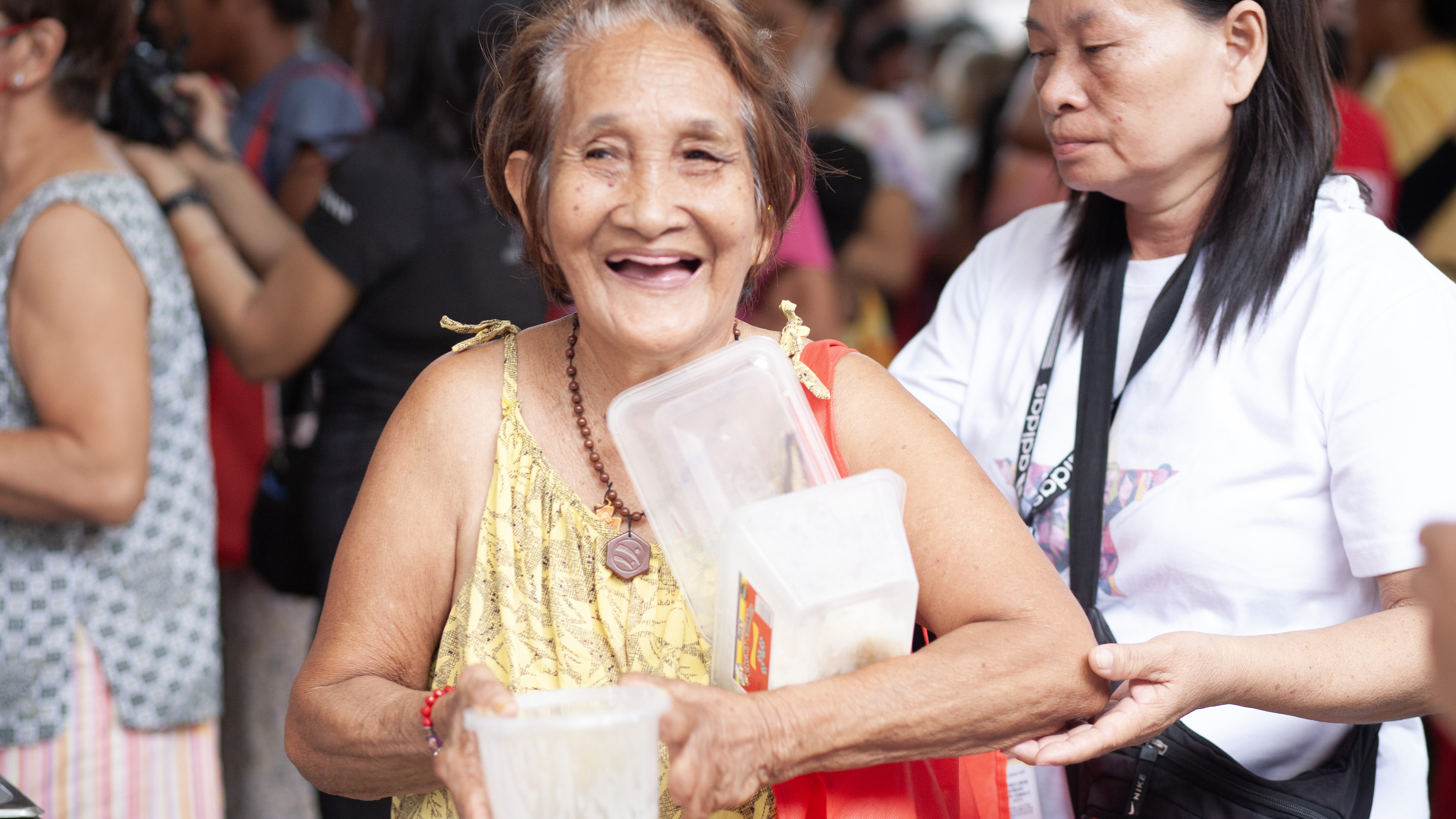About 733 million people around the world are facing hunger. This number comes from the 2024 State of Food Security and Nutrition in the World report recently published by the Food and Agriculture Organization (FAO) of the United Nations. The FAO’s annual report provides the latest data on hunger and food insecurity, the world’s progress toward United Nations Sustainable Development Goal 2: Zero Hunger and what must still be done to achieve that goal. As an organization committed to ending world hunger, the report’s findings shape how we work — and how we engage Hunger Champions like you in our efforts. In this blog, we’ll share the state of global hunger, how Rise Against Hunger is addressing this issue and what you can do to help end hunger and support children and families around the world.
The Current State of Global Food Insecurity and Hunger
In addition to 733 million people facing hunger, 2.33 billion people — nearly 29% of the global population — are food insecure without regular access to the nutritious food needed to live a healthy life. The report underscores these statistics with a stark detail: hunger and food insecurity rose sharply during the COVID-19 pandemic and have not bounced back to prior levels. Hunger and food insecurity have remained relatively unchanged for three years.
Addressing the Report’s Findings: How Rise Against Hunger Is Working to End Hunger
Rise Against Hunger remains committed to our mission of ending world hunger. We work to address immediate needs and support long-term solutions, predominantly working alongside remote, last-mile communities worldwide. That is because “the prevalence of food insecurity is higher in rural areas than in urban areas,” as the FAO reports. In 2023, nearly 32% of adults living in rural areas globally faced food insecurity. Additionally, we work in regions and countries facing high rates of hunger. The report provided a breakdown by region. Africa, Asia, and Latin American and the Caribbean all had high rates of hunger — 20.4%, 8.1% and 6.2% respectively. Rise Against Hunger aligns our efforts with this data, concentrating our work on those three regions. We also work in several countries highlighted in the report as having high levels of hunger, including South Sudan, Haiti and the Democratic Republic of Congo. For example, in the Democratic Republic of Congo, Sara receives Rise Against Hunger meals at school. She feels stronger and less fatigued, enabling her to focus on her education. And in South Sudan, Rise Against Hunger works with partner Lift Up the Vulnerable to implement Empowering Leaders Through Nutrition-Smart Agriculture, a sustainable agriculture project that promotes self-sufficiency for Hope for South Sudan, a local school, by increasing crop production and dietary diversity. Since the project launched, the students now receive meals from crops grown at the school and there are zero cases of malnutrition on campus. 
What You Can Do: Ways to Take Action and Help End Hunger
Rise Against Hunger will not stop until zero hunger is a reality, and we need your help! Here are ways you can get involved:
- Donate to support communities around the world. With a monthly gift of $30 – just $1 per day — you can nourish a child for an entire month.
- Host a meal packaging event! With your business, church, civic organization, school or other group, you will assemble nutritious meals that are shipped across the globe. Through this hands-on experience, you will make a big impact and nourish lives.
- Spread the word and stay informed. Grow the movement by telling your friends and family about the importance of addressing hunger and Rise Against Hunger’s mission. When more people know about this critical issue, more people get involved!


